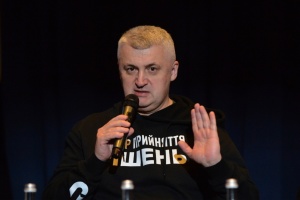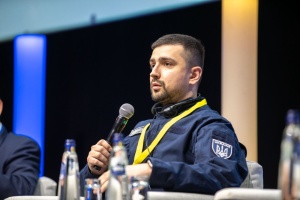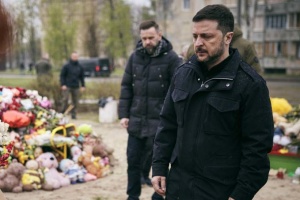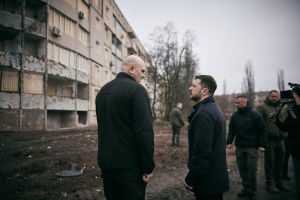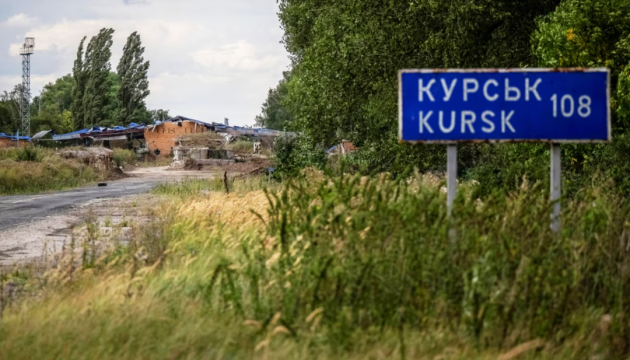
Kursk Incursion: what the goal is and what caused Russian defenses to fail
Ukrainian Armed Forces have continued with their offensive operation in the Russian region of Kursk. Following a few days of silence, this fact was officially confirmed by President Volodymyr Zelensky and the Ukrainian Armed Forces Chief Commander, Oleksandr Syrsky.
At a meeting at the Supreme Commander-in-Chief Headquarters on August 15, General Syrsky reported that a military commander’s office has been set up in the Ukraine captured part of the Kursk region, with Major General Moskalyov appointed as the commandant. Syrsky additionally reported Ukrainian troops had advanced 35 km deep into the region and taken control of 1,150 square kilometers hosting 82 villages and towns. This is genuinely a fantastic success. Why? Because Ukraine has been able to capture as much of the adversary’s territory in just 10 days as the Russian army occupied in Ukraine over nearly eight months of this year.
However, neither the President’s Office nor the General Staff have yet announced the goal (plan/objectives) of this Ukraine’s incursion into Russia.
Ukrinform spoke to military experts about the factors behind Russian army’s failures in the Kursk region and what consequences, favorable or not, this has already had or is likely to have for the Russian Federation, Ukraine and all of the world?
SIX LIKELY GOALS OF THE KURSK INCURSION
Goal No 1: Make Russia withdraw forces from the areas Ukraine considers potentially most prone to Russian attacks
"The strategic goal of Ukraine’s offensive in Kursk was obviously to cut down the adversary’s offensive capacity on the Eastern front, to divert the enemy's reserves from the "hottest" stretches of the frontline - a response that mirrors Russia’s offensive in the Kharkiv region in May," Pavlo Lakiychuk, the director of security programs at the Center for Global Studies "Strategy XXI" said in a comment to Ukrinform.
The Kursk incursion has had limited success so far, the expert believes. The adversary is chaotically redeploying forces within its North force grouping, particularly from the Kharkiv front. Enemy’s reserves are being moved in to Kursk from the southern and eastern stretches of the Ukrainian frontline.
"But at this point these are small units or ones that have already been withdrawn for rest and recovery. Commanders of Russia’s Center force grouping are in no hurry to withdraw troops from the axes of its advance. Obviously, the offensive operation they are conducting on the Kramatorsk-Toretsk-Pokrovsk axis remains their number one priority, says Mr. Lakiychuk. The redeployment of the best combat-capable units within the Center force grouping to the Kursk region will indicate that the Russians are in trouble. This may be an indication of a strategic turning point in the war."
Oleksandr Musienko, the head of the Center for Military and Legal Studies think tank, believes that the adversary will have to redeploy to the Kursk front the forces which it previously planned to deploy to the Donetsk, Kharkiv or Luhansk fronts.
"These forces will now be fighting in Kursk. The Russians have given up plans to amass reserves on some axes, such as Toretsk - New York, for example; they are not deploying reserves to these axes, as was the case until recently. The forces deployed out there have to fight without new reinforcements added. That is, the adversary is waiting to see how the situation will develop in the Kursk region," the expert believes.
Oleksandr Kovalenko, a military analyst at the Information Resistance group, adds that, according to the provided information, the Russian army is pulling its 138th Separate Mechanized Rifle Brigade, along with the 79th and 272nd Motorized Rifle Regiments out of the Kharkiv front and towards the Kursk front.
"The redeployment of these forces and capabilities will impact on the fighting in the Kharkiv region and alleviate the pressure exerted on this axis by Russia’s occupying forces. What will this entail? It is highly likely that the Ukrainians will counter-attack, then move on to a counter-offensive aimed to push the Russians out if not beyond Ukraine’s international border then at least beyond the limits of Vovchansk town and Hlyboke village," the expert predicts.
The adversary is currently redeploying at least two of its battalions to the Kursk region from Kupiansk axis, which is within the responsibility zone of Russia’s West force grouping.
"The end goal will be to get the 810th Naval Marine brigade -- which for almost a year earlier was struggling to regain control over Krynky, a key village in the heavily-contested Dnipro bridgehead in the Russian-occupied part of the Kherson region -- pulled out of the currently hottest Pokrovsk axis," Mr. Kovalenko says.
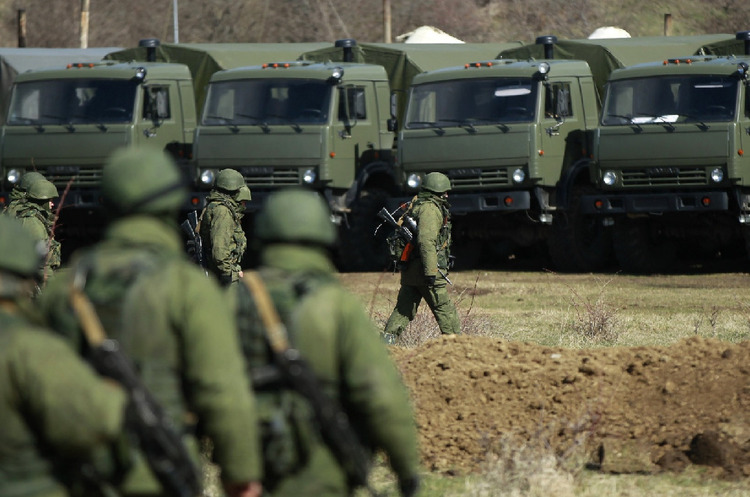
Furthermore to this, the Russian Federation urgently undertook to redeploy its troops from Kaliningrad to the Kursk region, according to Lithuanian Defense Minister Laurinas Kasciunas.
"We are now seeing how they (the Russians - Ed.) are redeploying their troops to Kursk. I am saying to the Lithuanian people: look at how the Ukrainians are fighting for you, because, due to their struggle, Russia is forced to deploy its troops out of Kaliningrad. We even call it the "demilitarization" of Kaliningrad, which is thanks to the bravery of your military, thanks to your decisions," the Lithuanian defense minister said.
Goal No 2: To create a "buffer zone" to secure Sumy Oblast
Pavlo Lakiychuk recalls how Russian dictator Putin, in March, threatened Ukraine and the world "with the creation of a "sanitary zone" in northern Ukraine." And his spokesman Peskov clarified that the "buffer zone" will cover the Ukrainian regions of Chernihiv, Sumy, and Kharkiv. In May, the Russians began the implementation of "Putin's covenants" with the invasion of the Kharkiv region.
In a comment to The New York Times on May 14, General Kyrylo Budanov, the head of the Main Intelligence Directorate at Ukraine’s Ministry of Defense (GUR), confirmed the enemy's plan. He also claimed that Russia planned a similar operation in the northeastern Sumy region, where he said small groups of Russian troops are located.
“The Russians actually planned a similar operation in this region from the very beginning. As of now, they are holding small groups of forces in the border town of Sudzha on the side of the Russian Federation, but the situation has not yet allowed them to take active actions and start implementing their plan,” he said.
Budanov emphasized that "the enemy has no intention to retreat, it is only necessary to get it knocked out."
"Therefore, the beginning of the Kursk operation by the Armed Forces three months after the escalation of hostilities in northern border areas was predictable. It no longer matters what triggered the offensive, whether it was a cross-border provocation staged by the Russians, or a pre-emptive strike by our forces aimed at dissuading the invader. But it is obvious that the offensive was meticulously planned for, in conditions of an information blackout and with measures taken to mislead the enemy - the incursion has caught the enemy off guard. This is the first tangible success," says Pavlo Lakiychuk.
Oleksandr Musienko, the head of the Center for Military and Legal Studies think tank, draws attention to the fact that the city of Sudzha was home to the Russian force’s headquarters: "The enemy was planning for an offensive towards the Sumy region back in May. On top of that, Sudzha served as a coordinating center for attacks on Ukrainian territory with artillery and mortar fire, as well as for subversive and recon operations in Ukraine."
Goal No. 3 — strategic critical infrastructure facilities
The first is the Gazprom’s gas metering station (GMS) located in the city of Sudzha, which is currently under Ukrainian military control. The Urengoy-Pomary-Uzhgorod main gas pipeline runs through the Sudzha station. This is the key and only operational route for the transit of Russian gas to European Union countries via Ukraine. In fact, the Sudzha GMS is a border point for gas from Russia. Passing through it, the fuel enters the Ukrainian gas transport system, then to Slovakia, Czechia, and Austria. Last year, about 14.65 billion cubic meters were pumped through the station, which is almost half of all Russian gas exports to Europe.
Second is the Kursk Nuclear Power Plant, one of the three biggest nuclear power plants in Russia and one of the four biggest electricity producers in the country, located in the city of Kurchatov about 40 kilometers west of the city of Kursk. In the event the facility goes over under Ukrainian military control, the aggressor country’s power system will be in for certain difficulties, experts say.
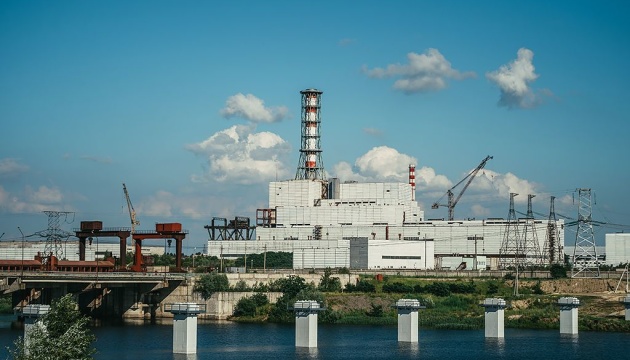
"Not only can the GMS and the NPP secure our soldiers from enemy’s bombing attacks, but also become a real trump card in the future. These two facilities can be exchanged for something, for example, the Russian captured Zaporizhzhia NPP," Oleksandr Kovalenko explains.
Goal No. 4 — prisoner-for-prisoner and territory-for-territory exchanges
Having taken control of Russian territories, Ukraine can use them as a bargaining chip in future negotiations.
"The territory-for-territory exchange in order to gain a leverage in negotiations is also a very important story. Hypothetically, imagine the negotiations got underway, and we will say: we have these territories of the Russian Federation under our control, let's exchange them for the territories Russia has under its control in Ukraine", Denys Popovych, a military analysts, deliberates.
Pavlo Lakiychuk comments: "If authorities in Kyiv were considering the capture of Russian territories as a "bargaining coin" in future negotiations between Ukraine and the Russian Federation and as a separate goal of the Kursk Offensive operation, this theory has the right to exist. But it was a false idea: one must be able to predict Putin’s behavior: "Now it is clear why the Kyiv regime refused our proposals to get back to the peace settlement plan ... to the proposals from interested and neutral mediators. .. What negotiations can we talk about at all ... What can we talk about with them at all?" Hypocrite! The Kursk operation seems to have had an unexpected (or, on the contrary, meticulously thought-out) result - hysteria in the Kremlin! And this is a plus. As Sun Tzu wrote, anger is a bad starting point."
A supplemental tactical goal of the operation relates to captured Russian (and not only) military personnel, photos of whom are distributed on social networks and in various media. They will replenish the prisoners’ pool for future exchanges.
"The blue-colored plumber duct tape is running out. No, this is not a joke. "It seems like there will soon be staged a fundraising campaign to buy armored duct tape", Oleksandr Kovalenko remarks with a funny comment.
As of August 15, some two thousand Russian soldiers who had been captured by Ukrainian troops during the Kursk operation have been added to the pool of prisoners for future exchanges, according to Kovalenko. "Birds whispered that there were even more of them, probably over two and a half thousand. They are mostly conscripts. For the context: Russia had 10,000 troops deployed in the Kursk region, meaning the force has lost 25 percent of its strength, and this not inclusive of dead and injured casualties, which are hard to count at this point. At the same time, after more than a week of hostilities, conscripted Russian soldiers continue surrendering to captivity, meaning they have not been removed to rear areas of Kursk Oblast, even after hundreds of them had been captured already. It’s a good news, and not only because it reveals a severe shortage of resources available to the Russian occupying forces..."
Russian conscripts in Ukrainian captivity is something that can trigger protests from so-called "committees of soldiers' mothers" in the Russian Federation, as well as something that can “rock the boat” and shake the internal political stability in Russia. And that explains why the Kremlin is so anxious to get them back. According to Dmytro Lubinets, the Verkhovna Rada Commissioner for Human Rights, despite reports in Russian mass media that Moscow had purportedly decided to suspend prisoner’s exchanges with Ukraine, he was contacted by his Russian counterpart, Tatiana Moskalkova on August 14 with a request to talk over the exchange of war prisoners.
"This is very good news for our guys and girls, who are being awaited at home, and who are suffering in Russian captivity. Conscripted soldiers in Russia’s occupying forces are surrendering by the hundreds and thousands now, and tomorrow will see hundreds and thousands of our heroes and heroines returning back home from Russian captivity," Kovalenko went on to note.
Meanwhile, Ivan Tymochko, the chair of Ukraine Ground Forces’ Council of Reservists, says that, in addition to soldier conscripts, the FSB (Russian Federal Security Service – ed.) and Kadyrov’s men – the people who are reverberating in some or other way among the Russian society -- are also getting to captivity.
"This adds many-fold to their value as prisoners," Tymocko clarifies.
Incidentally, a video footage emerged on the Internet showing captured Russian conscripts requesting to be exchanged for the Azov soldiers currently held captive by Russia.
"Dear Vladimir Vladimirovich [Putin], we are the conscripts who were defending the Kursk region and have got to captivity. We are asking to be exchanged for soldiers from the Azov battalion. We are scared a lot, and we want back home to our families and others we love," a Russian prisoner on the footage says.
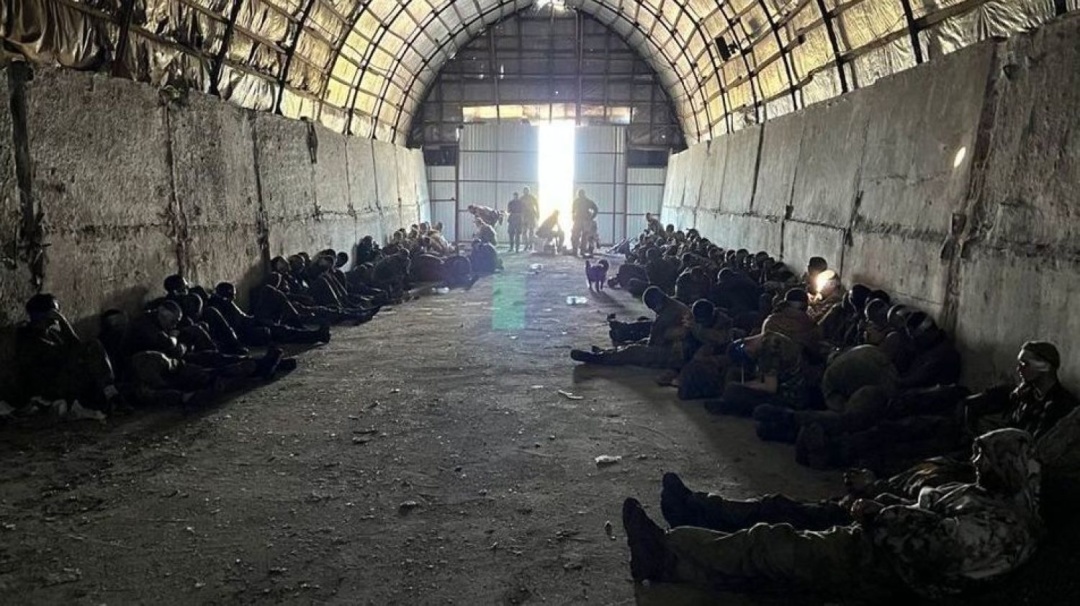
Goal No. 5 – to show off Ukraine's warfighting capabilities
Simply put, Ukraine’s incursion into Kursk is aimed to demonstrate that Ukrainian forces are strong enough to put pressure on Russian invaders. This may help persuade allies to lift restrictions on the use of weapons they’d supplied to go after military targets on Russian soil on the one hand, and stimulates the fighting spirit in the Ukrainians on the other.
"Any military operation, in addition to pursuing purely military goals, which are a priority, also aims at other, related tasks - military-political, diplomatic, informational, and psychological. It is therefore pretty obvious that the rapid Ukrainian offensive across the border into Kursk was supposed to demonstrate to our partners to see the fallacy of theories about the "positional stalemate", the weakness of Putin’s "red lines" arguments regarding the current ban on Ukraine using Western-supplied precision weaponry against military targets inside Russia. “Well, you forbid us from striking the launching sites of the missiles that target our cities, including the capital city, with the weapons you’d provided. OK, we will come there on foot and take out those launching sites with grenade fires,” Pavlo Lakiychuk says, and continues: “After all, a successful raid on enemy territory is supposed to raise the morale of the Ukrainians who begin losing confidence in their own power against the backdrop of reports about battlefield failures. We can and will crush the enemy in Ukraine and elsewhere!"
Goal No. 6 -- destabilization of Putin's regime
The surprise Kursk incursion has seriously rocked the top leadership in the Kremlin. The offensive and the huge defeat of the Russian army out there have shattered the stability and caused a conflict among Russia’s top leadership.
"These are the situations that undermine the unity among members of Russia’s ruling elite. This is evidenced by the facts such as the introduction of “anti-terrorist” regime in the Russian regions of Kursk, Belgorod, and Bryansk regions, with the FSB chief appointed to oversee the enforcement of the regime. On the one hand, this measure is reasonable enough where it comes to an anti-terrorist operation. But we perfectly understand that it was a consequence of the conflict, and Russia’s chief of the general staff vowed to get Ukrainian troops knocked out of the Kursk region. After he had failed to achieve this end, he was removed as commander and replaced with another. That is, not only is this a consequence of legitimate actions, but also of the conflict [among Russia’s ruling elite], and this conflict is going to expand further," says Denys Popovych.
Oleksandr Musienko adds: "There is no unity among them. The Chechen battalion already began talking that securing the border is a job for the Russians, not the Chechens. This all reveals the weakness of the Russian concept, the weakness of Putin and of his reputation and image."
UKRAINIAN BREAKTHROUGH: WHAT HAS MADE IT POSSIBLE, AND, MOST IMPORTANTLY, IS IT FOR LONG?
Oleksandr Kovalenko believes that the Russian army’s failures while defending the Kursk region against the invading Ukrainian forces have been caused by three factors.
Factor No. 1: Force composition
The force grouping North, which is responsible for the defense of Kursk, is comprised of three subgroups: Kursk, Bryansk and Belgorod. Of these, Belgorod group is best combat-capable and currently waging fighting in northern Kharkiv Oblast.
"The Bryansk and Kursk groups have too little personnel for defending even the border areas, just doing an imitation of defense actually. The Kursk group had a strength of approximately 10,000, but was armed and equipped way below standard quantities," says Oleksandr Kovalenko.
Factor No. 2: Operation planning
In preparing for the incursion into the Kursk region, the axis of Ukrainian forces’ advance were so perfectly and skillfully planned that has made the advance impossible to get stopped. Not only were Ukrainian forces advancing along logistical arteries and highways, but also along rivers that served as natural barriers, the expert pointed out.
"For example, traffic towards the Russian city of Sudzha went via the R-200 Highway, which runs along the left bank of the Oleshnya River. After the villages located on the left side of R-200 came under control of Ukrainian forces, they found themselves secured by a natural barrier," Kovalenko goes on to note.
Factor No. 3: Communication issues
“The failure of Russian defenses on the Kursk front occurred particularly due to the lack of an effective communication system. When the command and control chain became disrupted, individual units lost their ability to work at a high level of proficiency. Particularly soldiers from Kadyrov-sponsored Akhmat battalion, as soon as the artillery began to work, immediately fled their defending positions, leaving undertrained young conscripts alone to hold the defense”, the expert explains.
"These factors are all behind such a result, along with the fact that the Russian military and political leaders were in a sort of “anabiosis” during the initial 48-72 hours since the incursion started. It’s only recently that some action began to be undertaken to stop Ukrainian advances in the Kursk region," Kovalenko added.
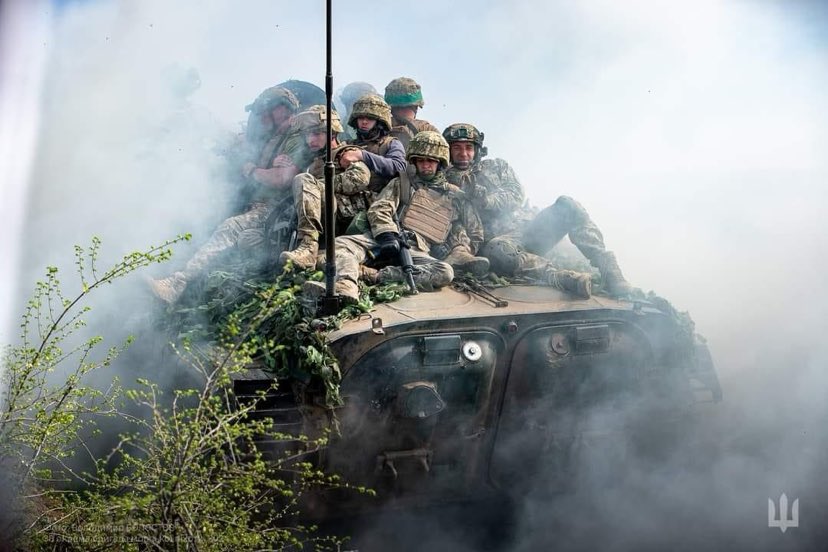
In answer to the question about how long "Ukrainian special military operation" on the territory of the Russian Federation can take, Oleksandr Kovalenko said that it is most likely a “medium-term plan”. "The Kursk operation by the Ukrainian Armed Forces is not like the raids performed by fighters of the "Freedom of Russia" legion previously, where they entered into Russia’s territory, terrorized the locals and fled away. What we are witnessing now is the implementation of a plan to dig in and expand the territory, which I call "the zone not controlled by the Russian army."
Oleksandr Musienko offered a similar view: "Ukraine must declare its intention to expand its military presence on Russian territory to the extent allowed by its capacities, resources and available assets of war. There are no restrictions here, no matter whether it is Kursk, Moscow or elsewhere. That’s the policy that should be pursued. Ukraine should declare in explicit terms that its ultimate goal is to expand the warzone, create problems for the adversary, inflict on it maximum losses possible, and, where possible, to advance as deep into Russia as capabilities allow. There should be no talk about restrictions or limits: this has no limits."
Pavlo Lakiychuk, for his part, says that the “Kursk Incursion, in terms of the intensity and scope, amounts to a sweeping offensive operation. At the initial stage, the goal is to break through enemy's defenses to a tactical depth. This stage is characterized by a high tempo of advance, but it does not last long, just for five to ten days”.
"As troops are advancing deeper into the enemy's defenses, the tempo gradually slows down as there is need to pull the second echelon, secure the flanks, and provide for logistics. Meanwhile, the enemy is little by little recovering from the defeat, deploying reserves and building provisional defensive lines. The tasks to be achieved next will be defined based on the success achieved in the initial stage of the operation, the availability of resources for developing the success further, as well as the logistics capabilities."
In the context of the Kursk operation, the expert mentioned the Kharkiv Offensive operation by the Ukrainian Armed Forces in September 2022: "Despite the rapid success, the offensive was stopped just a few dozen kilometers from so much longed for Svatove and Rubizhne – due to the shortage of logistics and resources that made it too risky to advance further, it was necessary to stop in time. No matter how much one would like to see an offensive toward Kursk or a raid on Belgorod Oblast, towards the rear of the enemy's forces on the Kharkiv front, such a scenario is unlikely to occur. The enemy is already digging in, pulling up reserves. Putin ordered his military commanders to “draw the adversary beyond the international border”, no matter what the cost. So, the Ukrainian army is in for tough battles."
THE DEVELOPMENTS IN KURSK CHANGED THE STATUS-QUO OF THE WAR, FORCED THE WORLD TO CHANGE ITS VIEW OF THE "UKRAINE CONFLICT"
Russia has been embarrassed by the Ukrainian army’s success in Kursk, showing off both to its friends and adversaries its inability to defend itself, especially on the border with the country it has been demonizing since 2014.
"We have a very revealing response from Russia’s partners. China, following a tradition, waited for nearly a week, giving the half-empire an opportunity to somehow remedy the shameful situation for the Kremlin. Having failed to see this happening, it responded by repeating its traditional peacemaking narratives about nothing. North Korea and Iran remained silent as if nothing had happened. Russia’s closest allies do not believe that Russia should be openly supported and Ukraine criticized: it has got into trouble by itself, so let it get out by itself," says Oleksandr Kochetkov, a policy analyst.
Even more interesting was a response from Russia’s satellite countries – CSTO members.
"Lukashenko, in his customary fashion, made all kinds of nonsense about a purported Ukrainian drone attack, deployed armored vehicles to the border and back, in every possible way creating the appearance that he was helping the allied state while himself having to repel a terrible attack by NATO," says Mr. Kochetkov. Other CSTO member states either ostensibly did not respond, or, like Armenia, hinted that since Russia did not help it against Azerbaijan, they are not obliged either. Kazakhstan, which is now getting closer not only to China, but also to the USA, responded in explicit language: the plan to attack Ukraine was not agreed with us, so why on earth do we have to rake up the consequences of this attack?"
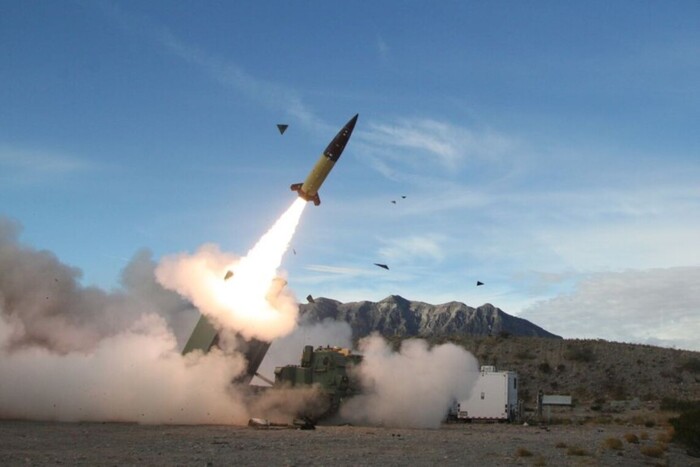
That said, the positive response by our Western partners to the developments in the Kursk region, who have recognized the right for Ukraine to defend its security interests by conducting military operations on Russian territory, is a significant favorable signal.
"I am convinced that the Kursk operation marks just the beginning of important military and political processes. The West responded favorably to the military operation being pursued by the Ukrainian Armed Forces in the Kursk region, because they understand that in this way Ukraine is trying to gain a leverage in future peace negotiations," says Volodymyr Fesenko, Chairman of the Board of the Center for Applied Political Studies "Penta".
“The West is currently waiting to see how the situation will develop in the Kursk region, and whether Ukraine will be able to convert the achieved success into a leverage in negotiating an end to the war. From the political and military perspectives, the key success of the Kursk operation was achieved thanks to unconventional actions. The Ukrainian incursion caught the Russians off guard. They were not prepared for this happening, and so Ukraine is likely to resort to a new surprise attack. Russia must be forced into peace. With its offensive in the Kursk region, Kyiv is playing along with the Western policy makers who are convinced that power projection is the only way to force the Russian Federation into ending the war," Fesenko pointed out.
Well, Ukraine has made its move. Now the partners must intensify their pressure on Putin, particularly by permitting the Ukrainian Armed Forces to unrestrictively use the weapons they’d provided to go for viable military targets on Russian soil.
"It is uncertain how the Ukrainian offensive will develop in the coming days and weeks, but we, however, can say already now that the Kursk offensive is not in vain, not even in the context of seizing the initiative or changing the balance of forces at the frontlines. It has changed the status quo of the war. It has forced the world to look at the "Ukrainian conflict" differently. Obviously, our Western partners will have to revise their strategies, no matter how much they want to stay in the warm bath. It is becoming more and more difficult for them to explain their reluctance to act, or, if you like, their strictly dosed support provided to Ukraine," Pavlo Lakiychuk believes.
Orest Sohar, an international columnist, comments: "The breach of the border in the Kursk region has made our intimidated partners convinced of what is obvious: nuclear threats are just part of Putin’s PSYOP, rather than a meaningful strategy pursued by the Russian Federation. And all the more so as Putin has an “older brother” in China, whose plans don’t include a nuclear war. It is critically necessary that Ukraine’s armed forces get their hands untied immediately: Ukrainian soldiers must be made free to use Bradley, Leopard, HIMARS for attacks on the aggressor’s territory. Sadly enough, the current black list of prohibitions includes UK-made Storm Shadow and U.S.-made ATACMS missiles, and Germany’s Taurus missiles are not in Ukrainian service either. It seems like it’s just a matter of time before these bans are lifted."
Myroslav Liskovych. Kyiv

